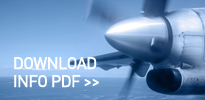AIR-PHOTO ANALYSIS
Multi-temporal aerial photo analysis. Extended with further information including warfiles, contemporary witnesses and maps.
An particularly suitable method is stereoscopic air-photo interpretation. It allows 3-dimensional views from different angles of a surface through two overlapping pictures. This method allows to differentiate explosive ordnance relevant structures as damaged buildings, bomb craters and saps from hazard-free objects as trees and bushes.
For target-oriented and systematic air-photo interpretation a whole range of modern analytical procedures is available at Luftbilddatenbank:
- stereoscopic air-photo interpretation with high-end
optical systems
(AVIOPRET, Leica) - stereoscopic mapping with analytical mapping systems
(STEREOANALYST, ERDAS) - digital photogrammetry and mapping
Depending on the aim of the interpretation the required procedures will be developed or combinded with each other.
For the remote detection of contamination or reconstruction of historic use LUFTBILDDATENBANK executes the following variants of analysis:
BUILDING GROUND REPORTS AND DETAIL-ANALYSIS
Sytematic analysis with focus on suspicion points of unexploded ordnance on buidling sites. The analysis results from visual interpretation of airsight war-damage with the help of an intensive literature- and file search. Explosive ordnance relevant finding will be measured geometrically and precisely localised.
HISTORIC-GENETIC RECONSTRUCTION
Analysis of contaminated and armament sites over several decades from World War II. Detection of the ordnance situation during war as well as military use in follwing times. Reconstruction of the historic use with aim on the detection of presumably contaminated land. The analysis comprise multitemporal, fotogrammetic-digital mapping and detailed interpreation of the survey site.
In the case of positive detection of airsight hints of unexploded ordnance our partners will support you through on-site exploded ordnance disposal:
HRS INGENIEUR- UND ROHRLEITUNGSBAU GMBH, Contact Department Explosive Ordnance: Mr. Ernst
KAMPFMITTEL SONDIERUNG SÜDDEUTSCHLAND GMBH
K.A. TAUBER SPEZIALBAU GMBH & CO. KG




